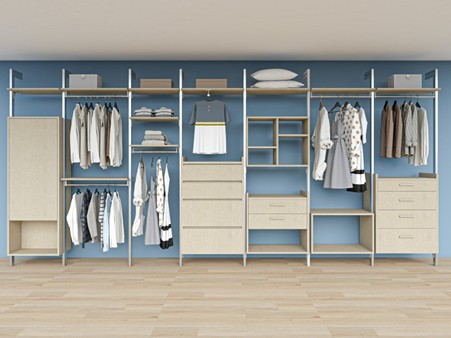The Ultimate Guide to Pole System Wardrobes in Singapore: Types, Uses & Design Tips
TL;DR:
- Pole system wardrobes are wall-mounted, modular solutions that maximize airflow and flexibility in small Singapore homes.
- Common configurations include internal-only hanging bars, bi-fold door enclosures, sliding door systems, and walk-in setups.
- Key steps: precise measurements, correct wall mounting, and mixing accessories like shelves, drawers, and mirrors.
- Ideal for BTO flats, resale HDBs, and condos; avoid common mistakes like improper load limits and overcrowding.
Table of Contents
- 1. What Is a Pole System Wardrobe?
- 2. Is a Pole System Right for You?
- 3. Types of Pole System Wardrobes (With Singapore Use Cases)
- 4. Design Tips to Maximise Functionality in Singapore Bedrooms
- 5. Best Pole System Uses in Singapore Homes
- 6. Pole System vs Built-In Wardrobe: Which Is Better?
- 7. Common Mistakes to Avoid
- 8. Expert Tips from HausBedroom
- 9. Key Takeaways
- 10. Conclusion
- 11. Call to Action
1. What Is a Pole System Wardrobe?
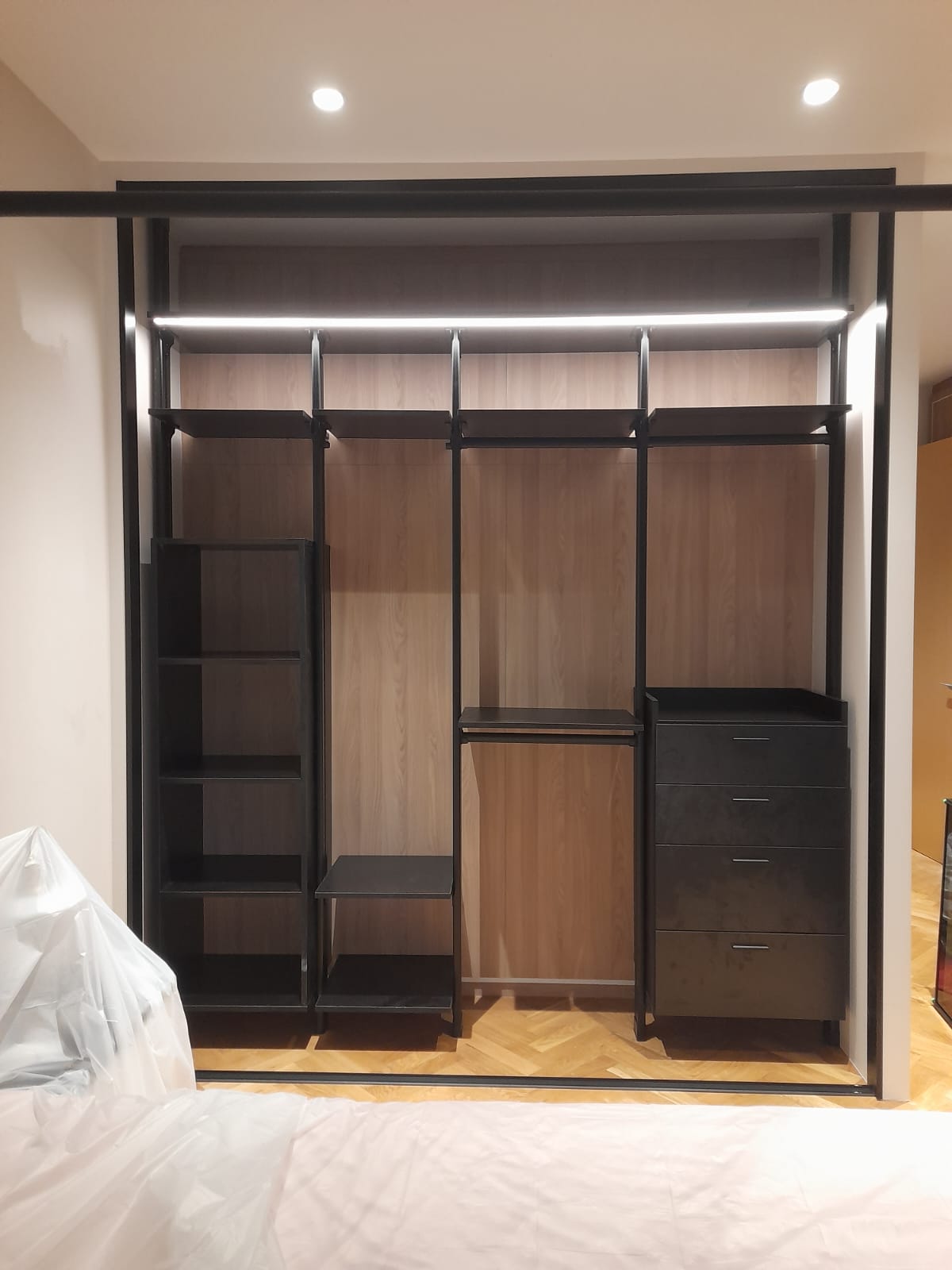
A pole system wardrobe is a modular, open-frame storage solution that replaces fixed frames and panels with vertical wall-mounted support poles, horizontal rails, and open shelving. It typically consists of:
- Vertical wall-mounted support poles
- Horizontal rails for hanging clothes
- Open shelves, drawers, and wire baskets for folded items and accessories
It’s minimal, breathable, and endlessly reconfigurable—perfect for evolving lifestyles and tight floorplans.
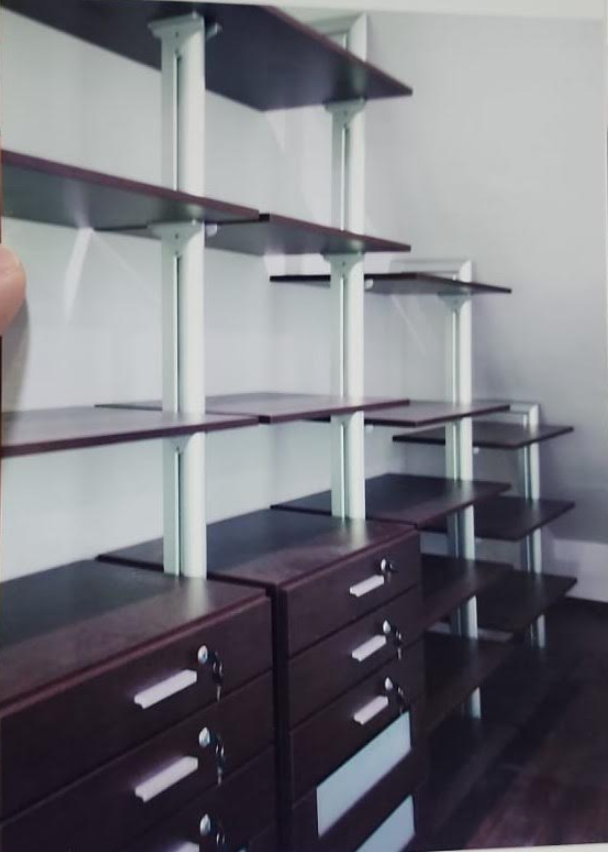
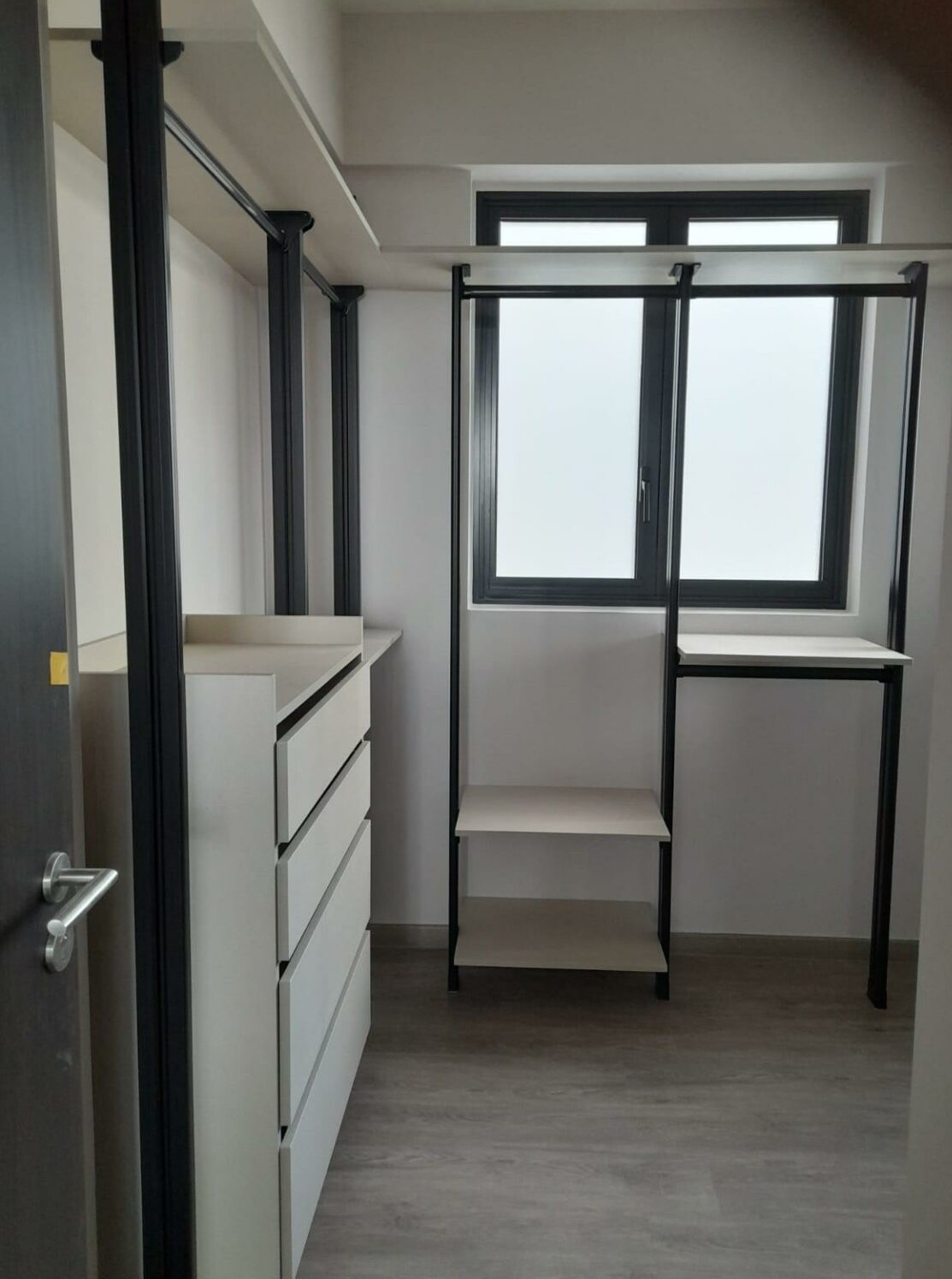
Key Takeaway: Pole system wardrobes prioritize flexibility and airflow, making them ideal for small Singapore homes where built-ins often fall short.
2. Is a Pole System Right for You?
Before choosing a pole system, ask yourself:
- ✅ Do you live in a small or irregular-shaped room?
- ✅ Do you want an open-concept wardrobe with visual access to everything?
- ✅ Are you a renter or homeowner seeking a non-permanent solution?
- ✅ Do you need modular storage that can adapt as your wardrobe grows?
If you answered yes to any of the above, a pole system might be your ideal fit.
Key Takeaway: Pole systems suit compact, rental-friendly, and evolving storage needs better than built-in wardrobes.
3. Types of Pole System Wardrobes (With Singapore Use Cases)
Below are four common configurations, each with local use cases and design tips from HausBedroom.
3.1 Internal-Only Configuration
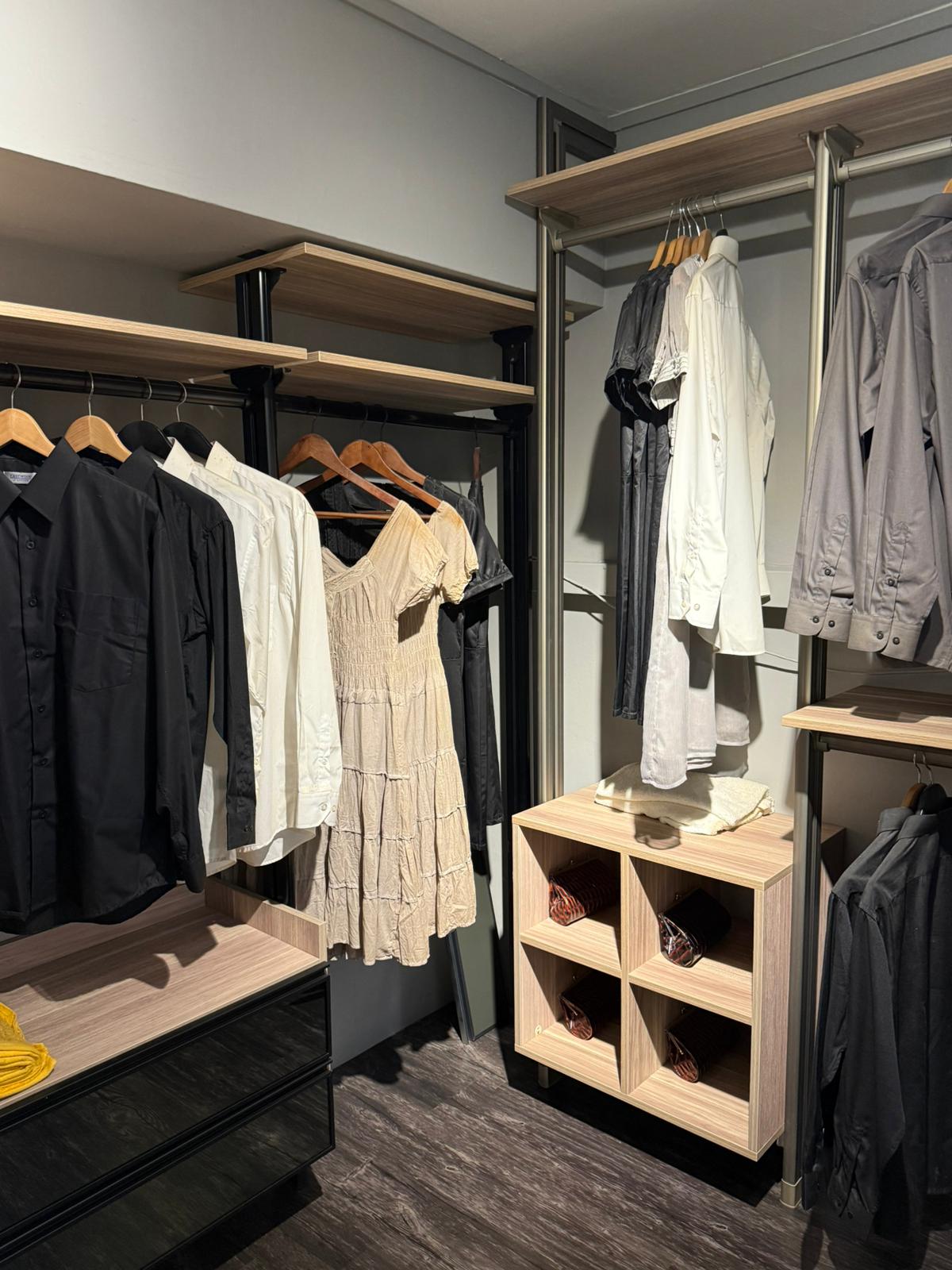
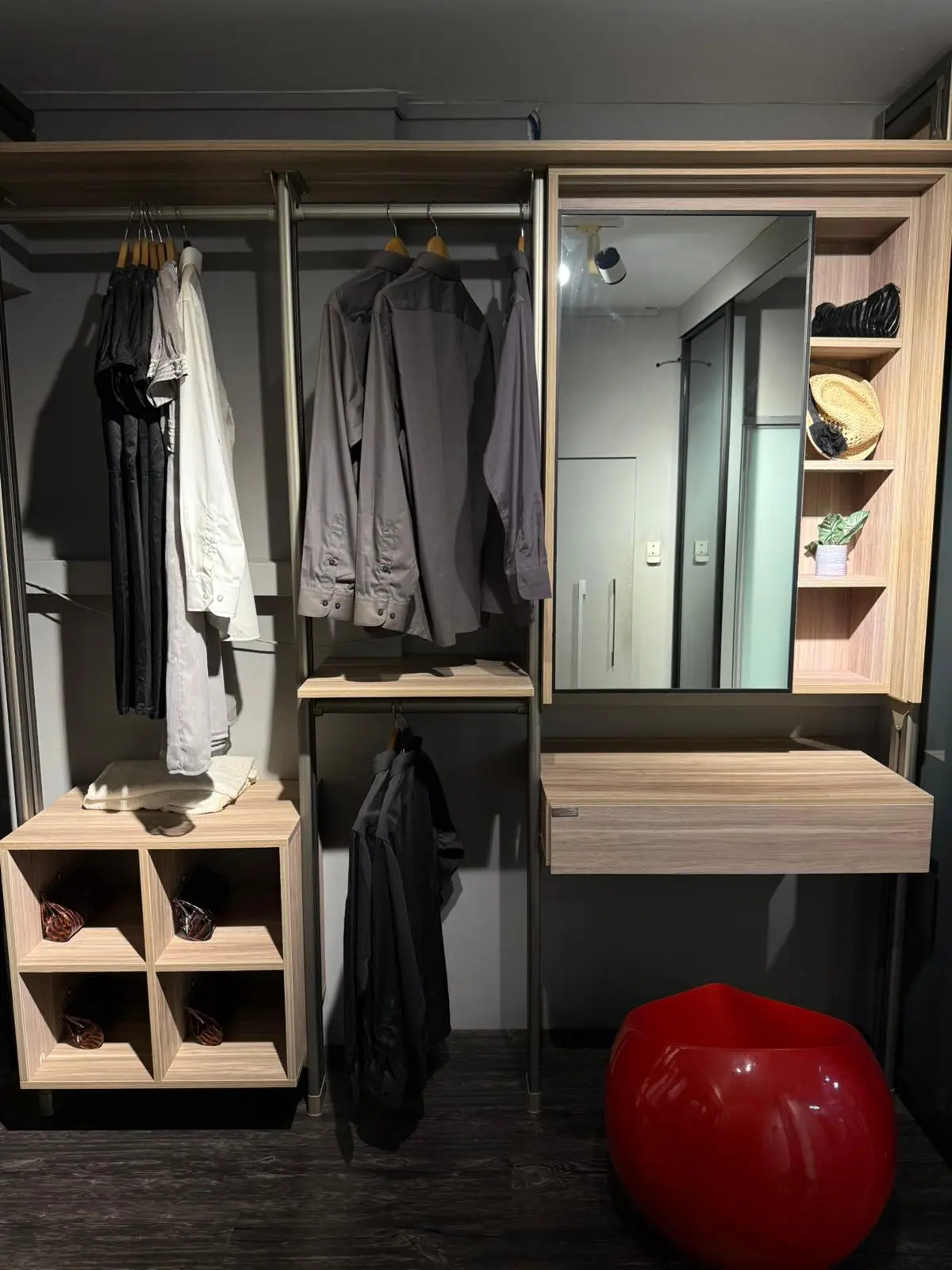
Definition:
An open-frame, internal-only system without doors or partition walls. Uses wall-mounted support poles and horizontal hanging bars.
Configurations Available:
- Double Hanging: Two levels of hanging bars for shirts above and pants or shorter items below.
- Single Hanging + Shelves/Drawers: One hanging bar with open shelves and drawer units beneath for folded clothes.
- Mirror & Pigeon Holes: Optional pull-out or boxed-up mirror, plus pigeon-hole compartments for stacked folded items.
- Integrated Dressing Table: Can incorporate a small tabletop and drawer into the pole system for grooming and storage.
Best For:
- Homeowners who prefer an unobstructed, gallery-style closet without doors.
- Small master bedrooms or guest rooms under 10 sqm in HDB flats and condos.
Singapore Use Case:
- BTO Flats: Install hanging bars at 1 m and 1.8 m heights. Use lower shelves for drawers and pigeon holes to maximize vertical space in a 9 sqm master bedroom.
- Resale HDBs: Replace dated built-ins by hacking out the cabinet and installing an internal pole system; integrate a pull-out mirror next to a dressing table nook.
HausBedroom Tip:
- Allocate 450 mm of depth for hanging bars so clothes don’t touch walls.
- Stack pigeon-hole inserts in 300 mm-high increments for folded clothes.
Key Takeaway (Internal-Only):
Offers maximum accessibility and visibility. Perfect for renters or homeowners who want an open-concept wardrobe that adapts with shelves, drawers, and integrated mirrors.
3.2 Bi-Fold Door Pole System
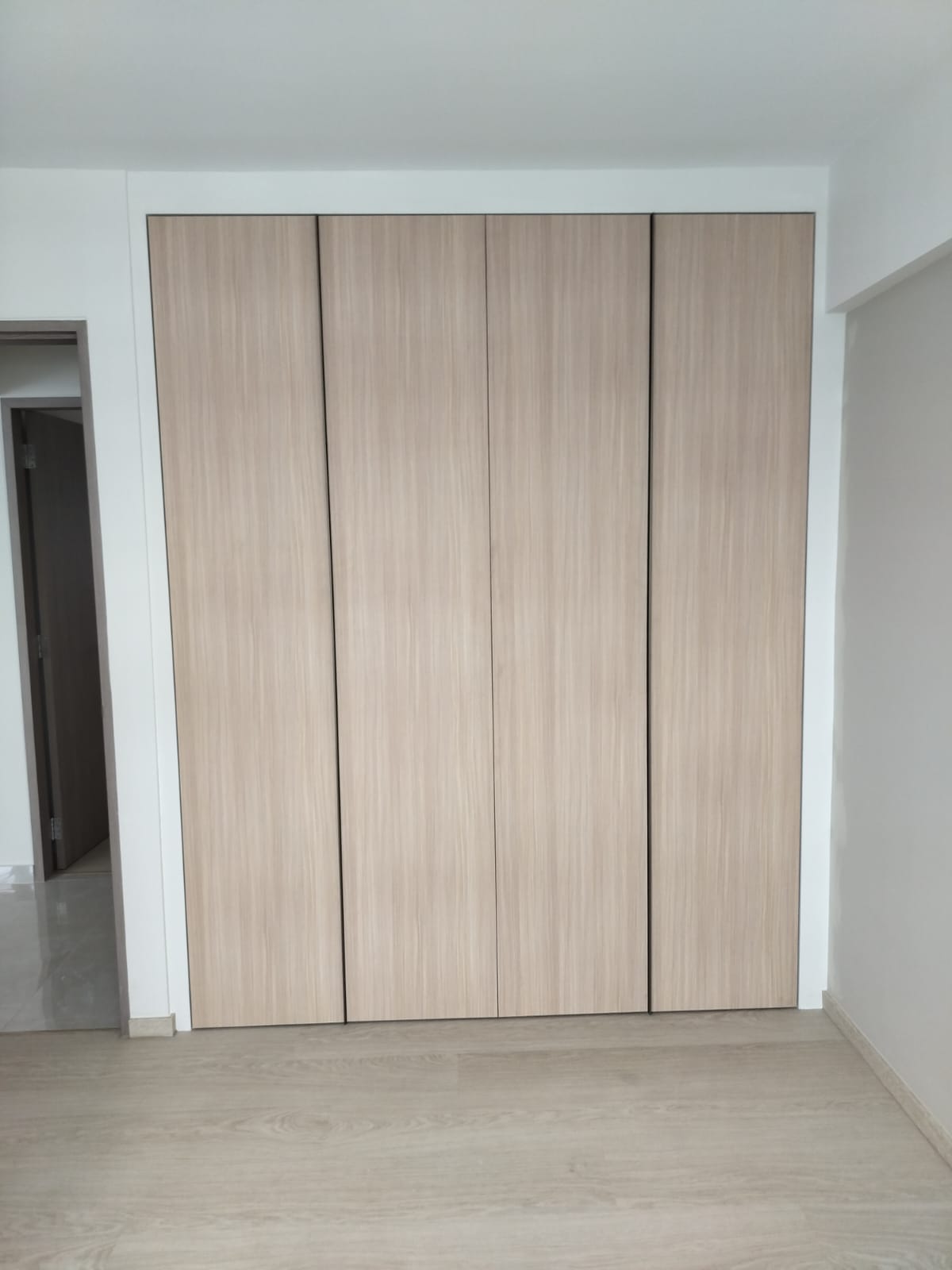
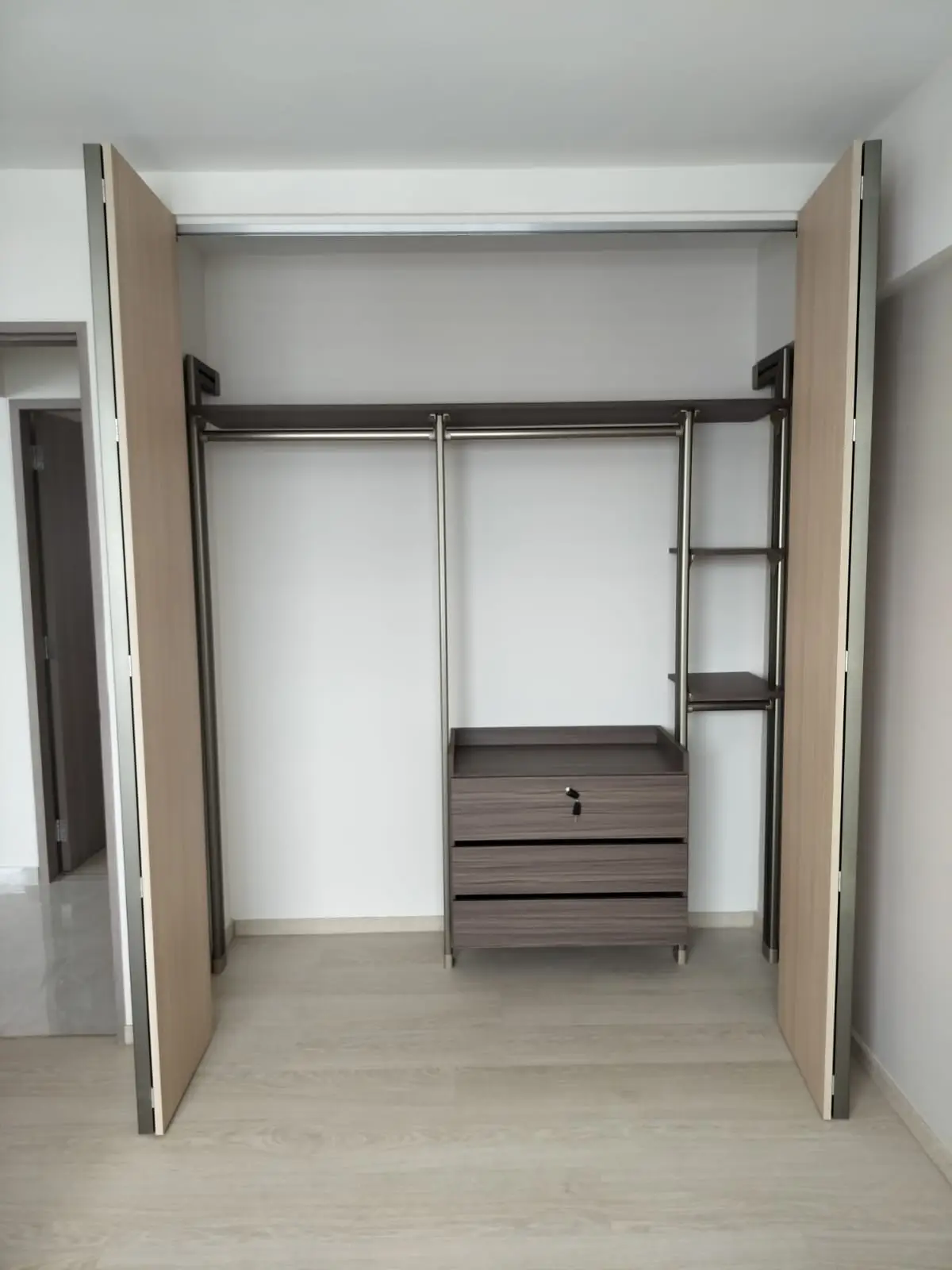
Definition:
An otherwise identical internal pole system, but enclosed by side partitions and bi-fold doors. No bottom runners—doors fold inward to reveal hanging bars and shelving behind.
Configurations Available (Internal):
- Double Hanging Bars: Two levels of hanging bars inside an enclosed cavity.
- Single Hanging + Shelves/Drawers: One hanging bar with shelves and drawers behind bi-fold doors.
- Mirror & Pigeon Holes: Add a boxed-up mirror mounted on the inside of one door and pigeon-hole cubbies above the drawer stack.
- Integrated Dressing Table: Optional small dressing table panel that folds behind the bi-fold doors when not in use.
Best For:
- Homeowners who want open-air functionality but prefer a clean, closed façade.
- Bedrooms where you need to conceal storage quickly without sliding door tracks.
Singapore Use Case:
- Condo Bedrooms: In a 10–12 sqm unit, use bi-fold doors to enclose hanging bars and drawers in a recessed niche—ideal for layouts with narrow walkways.
- Resale HDBs: Retrofit a built-in alcove by adding partition walls and bi-fold doors; keep bottom clear of runners to avoid tripping hazards in smaller corridors.
HausBedroom Tip:
- Use lightweight bi-fold panels with soft-close hinges for smooth operation.
- Ensure bi-fold door width does not exceed 600 mm per panel to prevent sagging.
Key Takeaway (Bi-Fold Door):
Combines the modular benefits of a pole system with a neat, concealed look—ideal when you need to hide clutter without permanent built-ins.
3.3 Sliding Door Pole Systems
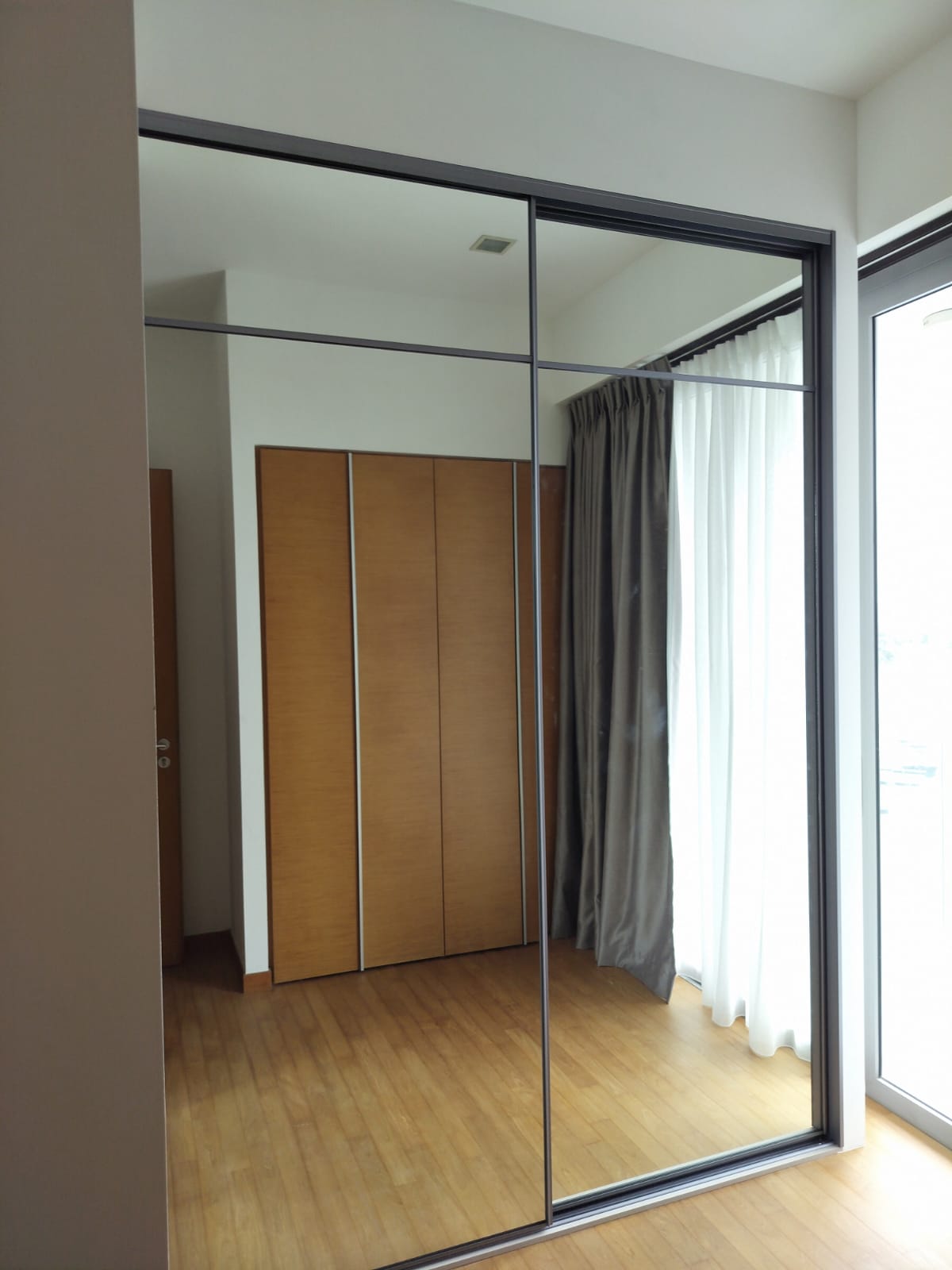
Definition:
A pole system mounted behind sliding doors or glass panels to combine open-air functionality with concealment.
Best For:
Homeowners who want a clean, enclosed look without sacrificing modular flexibility.
Singapore Use Case:
- Condo Renovations: Tuck a pole system into a recessed niche, then install floor-to-ceiling sliding glass doors—great for narrow walkways.
- Resale HDBs with Dust Issues: Sliding doors keep dust off clothes while maintaining airflow behind the screens.
HausBedroom Tip:
- Use mirrored or frosted glass doors to visually expand small bedrooms.
- Install dust seals along the track to minimize particulate infiltration.
Key Takeaway (Sliding Door):
Balances openness and privacy—ideal for homeowners who want to hide storage without losing configurability.
3.4 Walk-in Pole Wardrobe
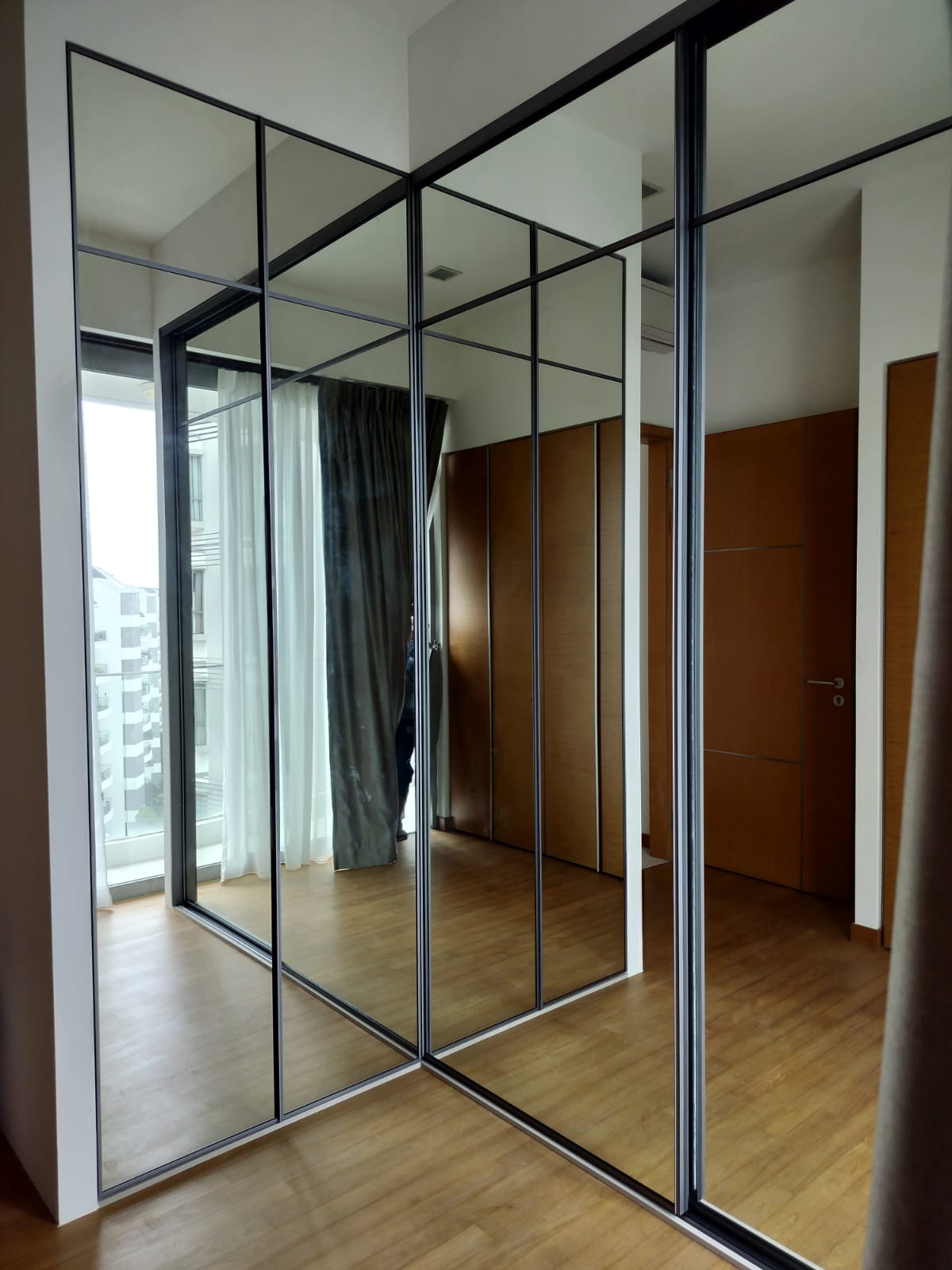
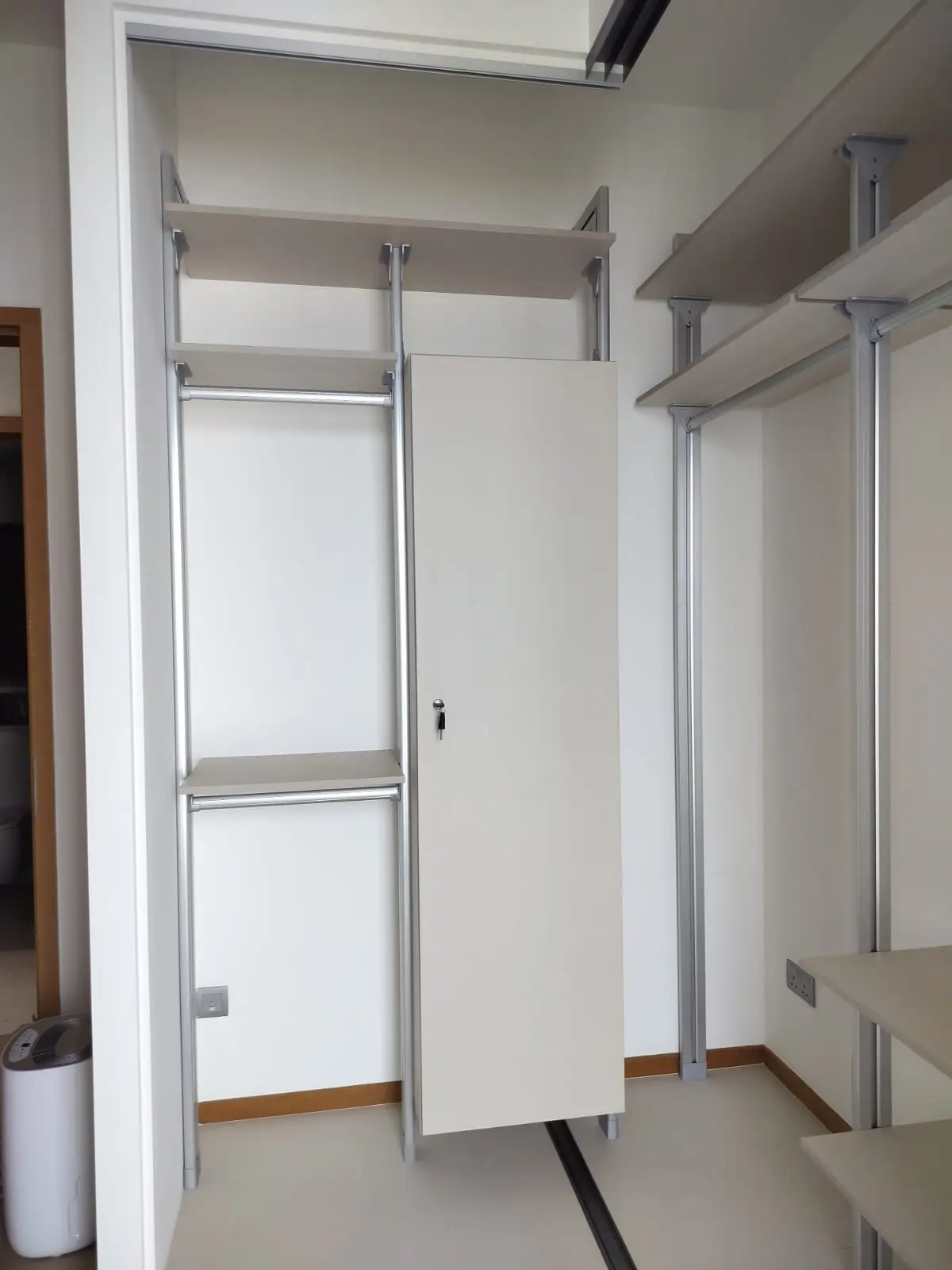
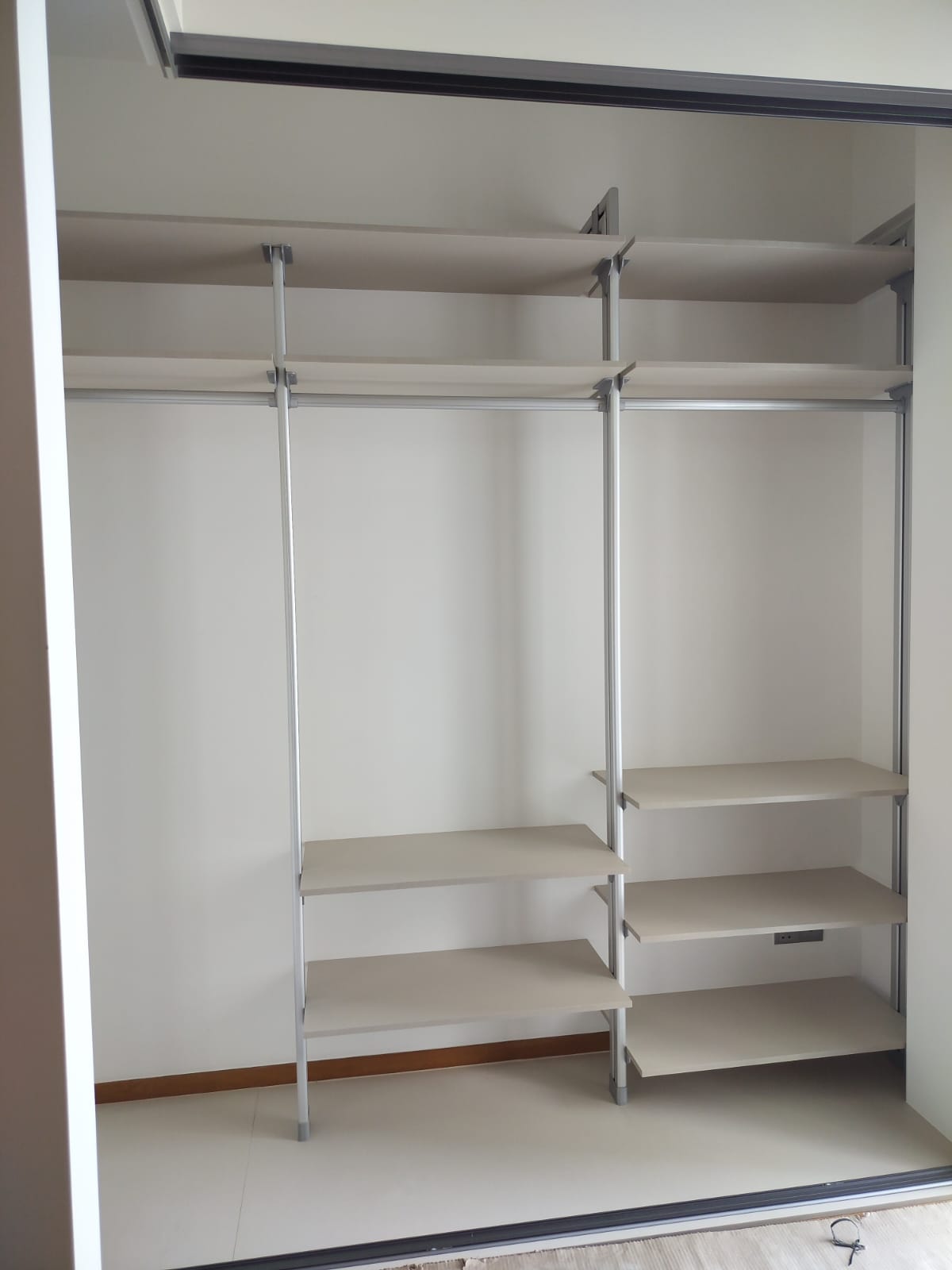
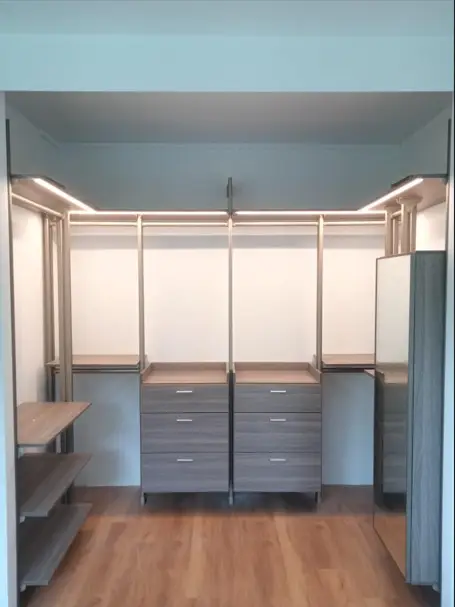
Definition:
Large L- or U-shaped pole system for a walk-in closet area. Includes rails, shelves, drawers, and optional island units.
Best For:
Master bedrooms or any adjacent spare bedroom converted into a walk-in wardrobe.
Singapore Use Case:
- Convert One Adjacent Bedroom: Transform a spare bedroom into a dedicated walk-in wardrobe, complete with L-shaped poles, shelving, and integrated lighting for a boutique-style experience in a resale HDB.
- Condo Penthouse Master Suite: Create a runway-style dressing zone with LED-lit poles and a central island for accessory trays.
HausBedroom Tip:
- Add LED strip lighting along horizontal rails and shelves for better visibility in dim corners.
- Integrate drawer units beneath lower rails for concealed storage of undergarments or jewelry.
Key Takeaway (Walk-In):
Offers a boutique feel and ample storage but requires at least 3 m width to avoid a cramped layout.
4. Design Tips to Maximise Functionality in Singapore Bedrooms
Singapore homes demand clever layout planning due to limited space. Follow these guidelines to make your pole system work harder:
4.1 Measure Precisely
- Pole Heights: Standard wall-mounted poles range from 2.4 m to 2.6 m.
- Depth Requirement: Leave a minimum of 450 mm depth for hangers (including garments).
- Rail Spacing: Allocate 500–600 mm vertical space between top and bottom rails to prevent wrinkles.
Key Takeaway (Measure Precisely):
Accurate dimensions ensure rails and shelves fit seamlessly, maximizing storage without under- or over-estimating space.
4.2 Use the Right Wall Type
- Concrete Walls: Ideal for drilled brackets—use M8 anchor bolts rated for 60 kg load per pole.
- Hollow Partition Walls: Only suitable if reinforced with plywood backing or use tension-mounted poles to avoid drilling.
- Tiles or Painted Surfaces: Apply plastic wall plugs rated for 50 kg to secure brackets—avoid drilling directly into glazed tiles.
Key Takeaway (Right Wall Type):
Proper wall selection prevents bracket failures and ensures pole stability over time.
4.3 Mix Accessories
- Wire Baskets: Provide breathable storage for folded items—each basket holds approximately 10 kg.
- Slide-Out Trays: Ideal for watches, ties, and daily accessories—mount beneath shelf units for easy access.
- Glass or Wood Shelves: Add a premium look—use 5 mm tempered glass or 18 mm plywood to display handbags and folded clothes.
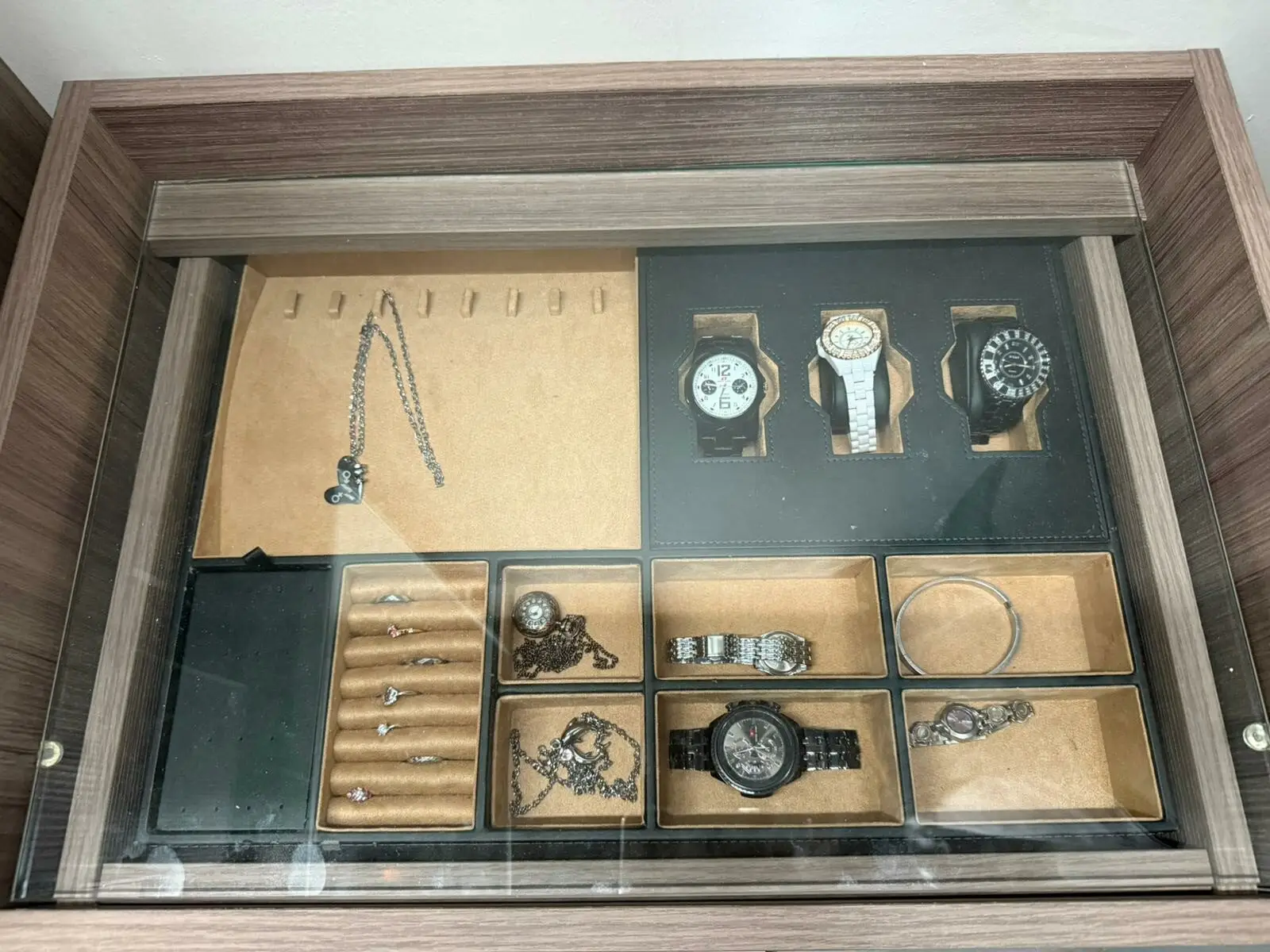
Key Takeaway (Mix Accessories):
Diversify storage options to keep accessories organized and elevate the aesthetic appeal.
5. Best Pole System Uses in Singapore Homes
- BTO Flats:
- Convert a 9–11 sqm master bedroom into an open wardrobe by replacing the built-in cabinet with a single or double hanging bar system.
- Create a niche behind sliding doors for privacy and dust protection.
- Resale HDBs:
- Replace outdated built-ins with modular units to improve air circulation and prevent mold.
- Use an L-shaped walk-in pole system if walls allow—add concealed LED strips for a boutique vibe.
- Condominiums:
- Integrate a pole system into an open-plan bedroom with glass partitions—maintain flow while showcasing clothing.
- Hide rails behind mirrored sliding doors to make the room appear larger and brighter.
Key Takeaway (Best Uses):
Pole systems adapt to various Singapore housing types, offering tailored solutions for space and style.
6. Pole System vs Built-In Wardrobe: Which Is Better?
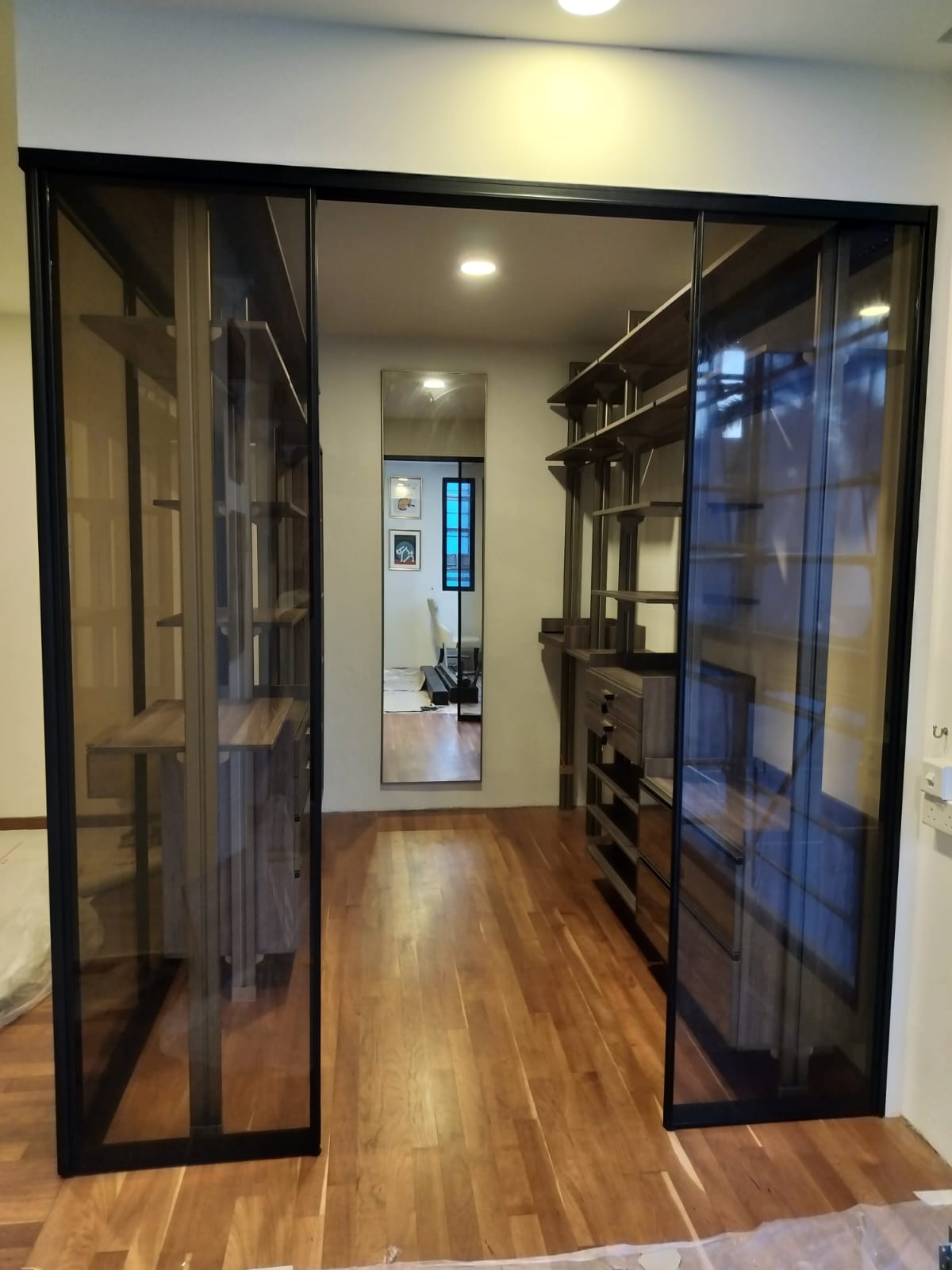
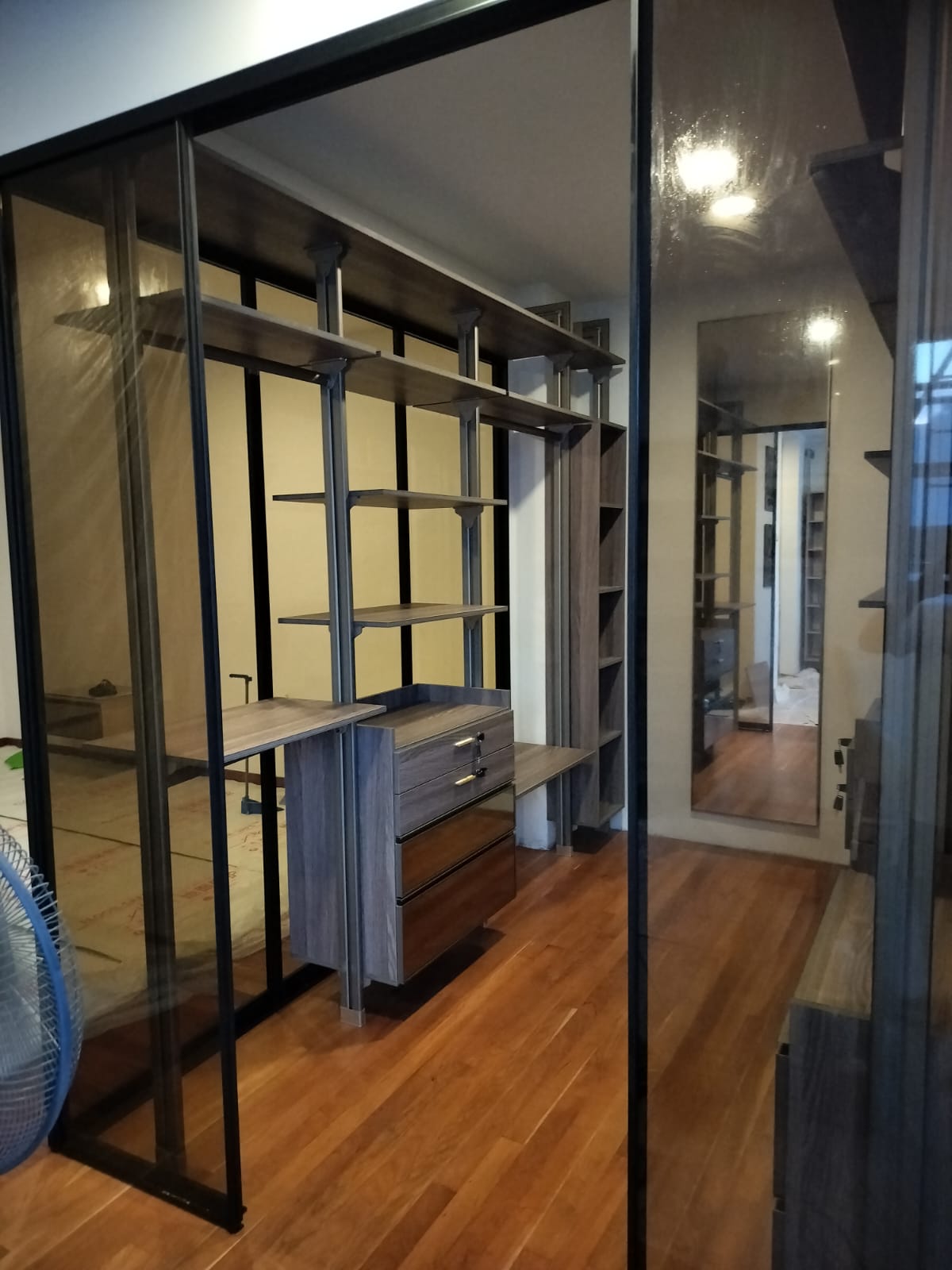
| Feature | Pole System Wardrobe | Built-In Wardrobe |
|---|---|---|
| Flexibility | High – Easy to reconfigure or expand | Low – Fixed compartments; difficult to alter |
| Installation | Low-impact; wall-mounted | Carpentry-intensive; permanent fixtures |
| Maintenance | Simple to clean; modules can be replaced | Requires full replacement if damaged |
| Suitability | Ideal for small rooms, rentals, open plans | Better for large rooms, seamless look |
| Look & Feel | Open, modern, industrial vibe | Seamless, minimalist, flush with walls |
Key Takeaway (Comparison):
If you value modularity and airflow in a small space, a pole system excels. For a flush, cohesive aesthetic in a larger room, a built-in may be preferable.
7. Common Mistakes to Avoid
- Choosing the Wrong Pole Height
Leads to wasted vertical space or insufficient clearance.
- Ignoring Load Limits
Budget bars may bend under heavy clothing (over 10 kg per section).
- Skipping Wall Reinforcement
Tension poles on uneven floors can slip; always verify floor and ceiling flatness.
- Overcrowding Accessories
Too many baskets or hangers can create clutter and defeat the open-air purpose.
Key Takeaway (Mistakes):
Proper planning—height, weight load, and wall type—is critical. Avoid shortcuts to ensure longevity and stability.
8. Expert Tips from HausBedroom
At HausBedroom, we’ve helped hundreds of Singapore homeowners design modular wardrobe solutions that balance space, airflow, and aesthetics. Our top recommendations:
- Use Pole Systems for BTO Rooms Under 3 m Wide
Single or double hanging bars save up to 0.5 sqm of swing space versus hinged doors.
- Blend Pole Wardrobes with Concealed Cabinetry
Install a partial build-in section for electronics or valuables alongside open rails to keep the room tidy.
- Choose Matte Black or Aluminum Hanging Bars
Durable finishes resist scratches and suit both industrial and modern themes.
- Install Integrated LED Strips
Enhances visibility in darker corners and highlights garment colors.
“Our goal isn’t to oversell fittings you don’t need—but to help you build a wardrobe that fits your lifestyle, layout, and budget.”
—HausBedroom Design Team
Key Takeaway (Expert Tips):
Combine open-air flexibility with selective concealed storage and durable finishes to achieve a balanced, long-lasting solution.
9. Key Takeaways
- Pole System vs Built-In: Pole systems offer modular flexibility and better airflow, while built-ins provide a seamless look in larger rooms.
- Space Efficiency: Double hanging bars with 500–600 mm spacing maximize hanging capacity in bedrooms under 12 sqm.
- Proper Installation: Reinforce concrete walls with M8 anchor bolts; use tension poles only on flat, level floors.
- Accessory Mix: Combine wire baskets, slide-out trays, and glass shelves for a balance of visibility and organization.
- Local Suitability: Pole systems retrofit BTOs, resale HDBs, and condos—saving up to 0.5 sqm compared to conventional wardrobes.
10. Conclusion
Pole system wardrobes give Singapore homeowners the flexibility, airflow, and modularity that built-in cabinets often lack. Whether you live in a 3-room HDB flat, a city condo, or a landed property, there’s a configuration—from internal-only hanging bars to bi-fold door enclosures—that can maximize space and style.
By measuring precisely, reinforcing walls properly, and mixing in the right accessories, your pole system will not only fit your floor plan but also elevate your bedroom’s aesthetic.
11. Call to Action
Ready to upgrade your wardrobe? Explore HausBedroom’s modular pole system solutions or schedule a free consultation for a custom layout plan and quote. Our design experts will guide you through every step—from measurement to installation—to create a wardrobe that fits your home and lifestyle perfectly.
